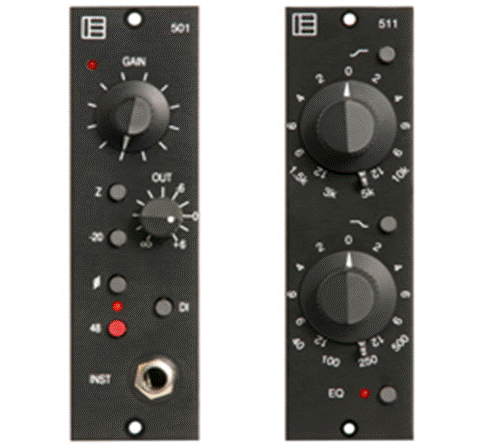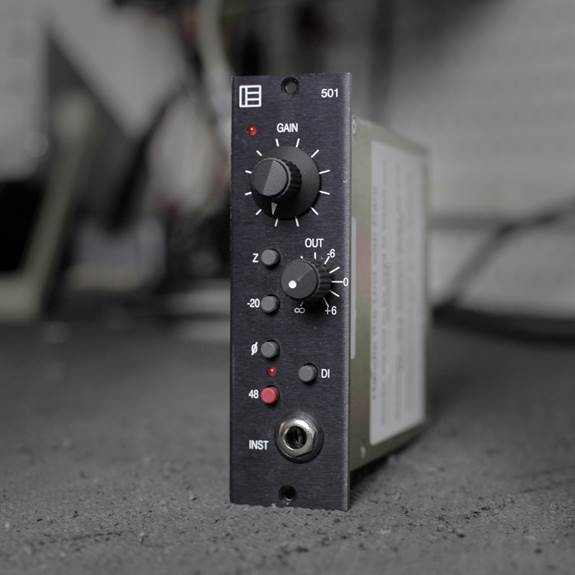Regrettably, I never had the opportunity to work on an
Electrodyne desk; the company closed its doors in the mid ’70s—over a decade
before I entered the business but its reputation remains legendary among my
peers.

Electrodyne 501
(left) and Electrodyne 511 (larger images of included with this report)
I did have the chance to work on multiple Sphere desks as
they were quite abundant in Nashville in my early days; Don McLaughlin started
Sphere after leav-ing Electrodyne. McLaughlin retained the majority of
Electrodyne’s designs, which he used in modified form in the Sphere con-soles,
making them sonically reminiscent of Electrodyne.More recently, Ken Hirsch of
Orphan Audio (www.orphanaudio.com) purchased Electrodyne and partnered with
Peter Montessi and Pete’s Place Audio to release the 500 Series Electrodyne 501
mic pre and 511 EQ. These are not pieces created in the vein of the real thing,
but arethe real thing; each amp stage incorporates the original factory engineering
notes and high-performance components, carefully matched to the original specs,
including the transformers. The two-stage discrete transistor and
transformer-coupled 501 mic pre includes an active DI, too.

The two-stage
discrete transistor and transformer-coupled 501 mic pre includes an active DI,
too.
The 501 has a maximum gain of 68 dB, adjustable over 50 dB
in 2 dB steps with two ranges (depending on if the 20 dB pad is activated or
not). Output level is infinitely adjustable from -∞(off) to +6 dB, while the
OUT control knob is labeled with a dot instead of a line which, unless you are
looking directly at the pre, can be difficult to read. The mic input impedance
is switch-able between 50 and 200 ohms and the DI impedance is over 7 MΩ. The
maximum output is +30 dB. The clip indicator monitors both amp stages and
illuminates when either stage is within 3 dB of clipping. The first time I put
the Electrodyne 501 to work was recording a male vocal with a Shure SM7B. The
sound was fantastic, possibly the best tone I’ve ever heard from an SM7B.
Further, knowing the historical significance of the pre practically gave me
goose bumps. I loved having the ability to turn the Output down slightly and
push the preamp harder to get more color. I used the pre to record female
vocals (Sony C800G), this time increasing the Output so as to not drive the pre
as hard for a more natural sound and the results were great. The 501’s DI circuit
sounds fantastic, especially on instruments with significant bottom end content
like bass guitar and analog keyboards. The instrument input’s amazingly high
input impedance guarantees compatibility with virtually any direct signal while
allowing the precise capture of the sound source’s true tone.

The sound was
fantastic, possibly the best tone I’ve ever heard from an SM7B
|
Specifications
·
Maximum Gain: 68db. Adjustable over 50db in 2db steps with two
ranges using 20db pad.
·
Output level control: Infinitely adjustable from 0 (off) to
+6db over unity.
·
Input impedance: Microphone, 50 / 200 ohms selectable. DI, over
7 megohms.
·
Output impedance: 150 ohms
·
Distortion: 0.02%typical over entire gain range.
·
Maximum output: +30db at less than 0.8%thd. (+29.5db at
0.06%thd)
·
Frequency response: +/- 0.25db, 10hz to 60khz.
·
Signal to noise: -80db typ, -60db at absolute maximum gain.
·
Clip indicator: Monitors all three amp stages and illuminates
when any stage is 3db from clip.
|